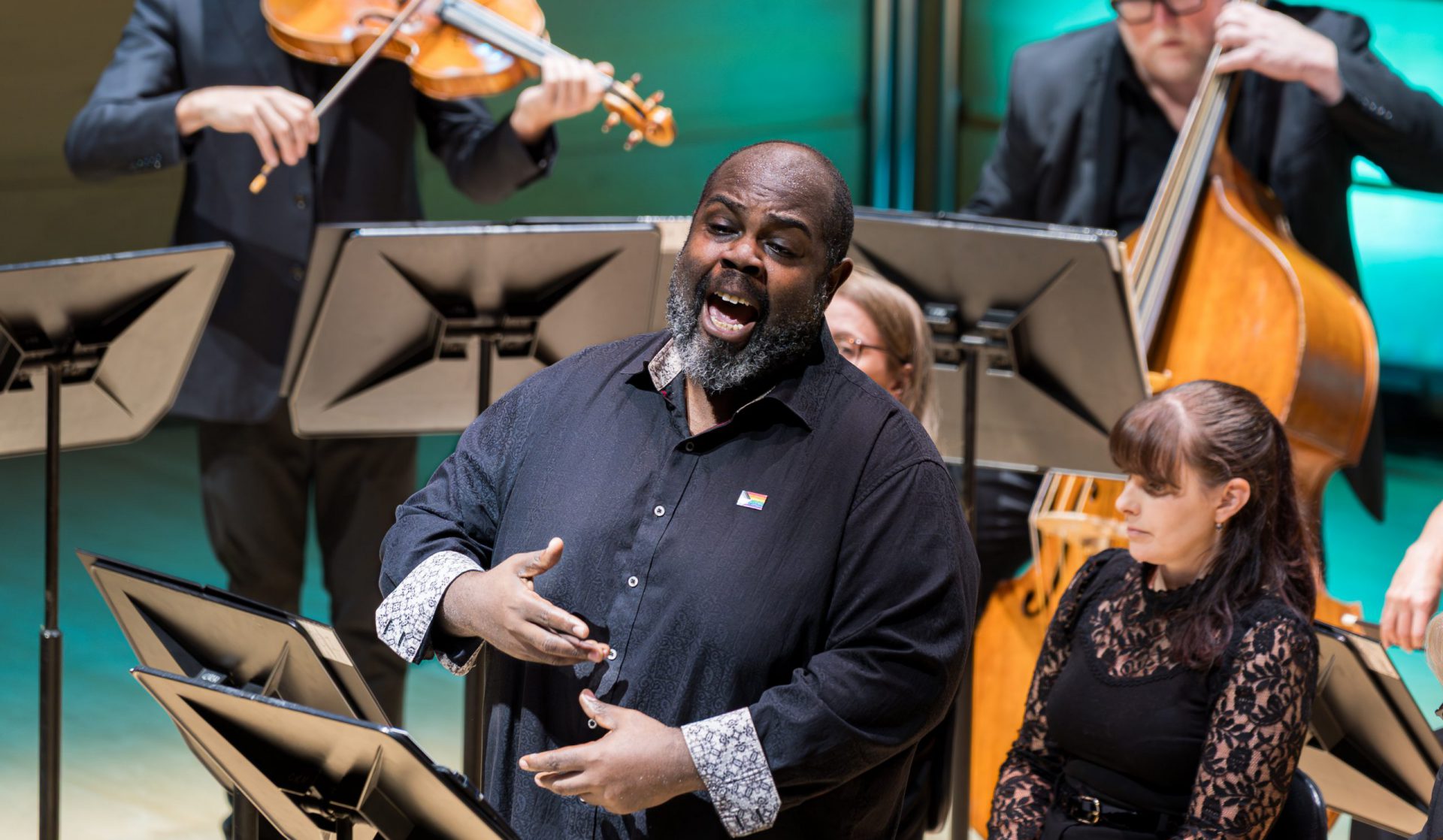This program was centred on the underappreciated potential of the countertenor voice in devotional music. What better way to explore the potential of that vocal range than with Reginald Mobley, an American countertenor.
This program was centred on pathos, introspection and devastation. The pathos connection came from the Baroque ideal of the alto voice as the symbol of the Holy Spirit. The connection with devastation was evident in the choice of Johann Christoph Bach’s famous lament, Ach, dass ich Wassers gnug hatte – a dark piece forged in the aftermath of the Thirty Years’ War. Madeleine Easton introduces the theme, which grows eerily and step-wise toward the sighing motif, sub silentio and with an ominous glassy effect on the strings. Mobley’s performance was restrained and subtle. It is an exemplar of that distinctive early Baroque, Northern German, quietist flavour which marked so much of the Abendmusiken movement, with its emphasis on lush and sinuous passages for strings.
The word “gnug” was the hallmark of the first half of this concert. It is the etymological root for the word “enough”, and denotes contentment. Hence “Ich bin vergnugt”. Hence also “Ich habe genug”. Mark Baigent introduced the theme sensitively on oboe. The theme is strikingly reminiscent of the opening of the heart-rending Erbarme dich, not to mention the opening to Wann kommst du, mein Heil from BWV 140.The cantata is classically associated with bass voice. But the countertenor voice makes it more poignant. Again, the alto voice is associated with sensitivity and pathos. The Baroque operatic trope of the countertenor voice is, of course, of the vulnerable (and often Oriental) child king. Mobley’s voice was consistently spectacular, but truly distinguished itself in the warm pastorale, Schlummert ein, in which his dynamic control was on full display. That is not to mention the full variety of his rhetorical prowess. For example, in the “Das der Seele konnte taugen”, he switches effortlessly from mellifluous contemplation to forceful declamation. We are at once being lulled and instructed. That is not to mention the striking “Tod” enunciated with great force in the closing recitative. Mobley’s is a voice that knows how to tell a story. He is keenly aware of the rhetorical and dramatic potential of the cantatas as an artform – a point that is lost on generations of musicians brought up on the idea that early church music is uniform, monolithic and stale.
Uniform, monolithic and stale, however, may be apt descriptions of Vivaldi’s Salve Regina. For a text that is so dramatically evocative, the music is bland, monophonic and not entirely inventive. It is probably what Stravinsky had in mind when he made his infamous jibe against Vivaldi’s concerti grosso. But that is not to deny that Mobley’s performance was captivating. The harmonic progression of the Eia ergo was strikingly similar to Vivaldi’s famous Agitata da dua venti. There was much operatic coloratura to go with it, which Mobley took in his stride. Mikaela Oberg distinguished herself, this time on recorder rather than flute, in the O Clemens.
Aside from all this devotional music, there was Bach’s Orchestral Suite No 2 in B Minor. Unlike the other three surviving orchestral suites, this was likely performed indoors (and not in Zimmerman’s outdoor garden), set as it is sans brass and with the flute as the soloist. The Ouverture was played at a lively tempo – even faster than Paul Dyer had it only a few weeks earlier when the ABO performed the full suite of the suites. Neal Peres Da Costa had tasteful figured bass realisations on basso continuo in the Sarabande, and the Polonaise was performed double-dotted to accentuate the dance origins of these pieces. The Menuet too was played at a lively tempo, and the Bouree finishes whimsically with an upward arpegiatted flourish on flute. The Badinerie was, as always, a rollicking finish.
What better way to end a concert centred on alto voice than with Bach’s Widerstehe doch der Sunde. It is a supreme example of moral instruction through music. There was much talk throughout the Renaisaance about prepared dissonances. But this cantata begins provocatively with a jarringly dissonant chord. It is only retrospectively, after some harmonic development, that that beginning becomes justified. Much rhetorical technique was shown in the recitative. Mobley executes a divine trill on “Gottes Reich”, and Anthea Cottee delivered some impassioned passages on cello. The subject of the fugal third movement snickers sinisterly at its audience. Melismas on “widerstanden” and “davongemacht” were despatched with ease.
